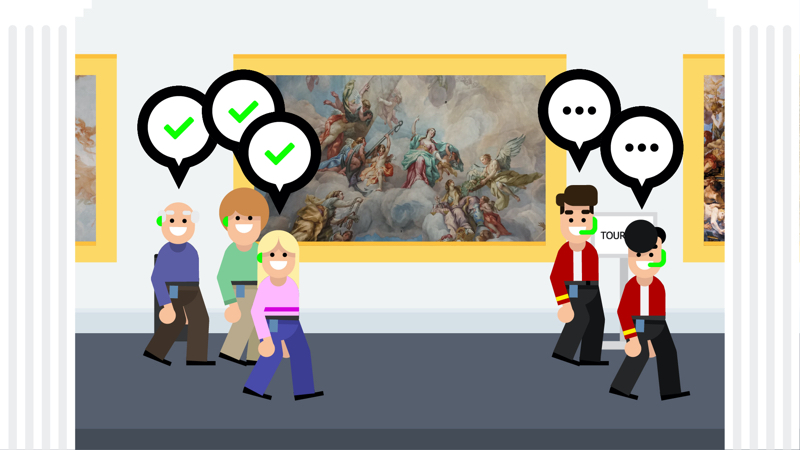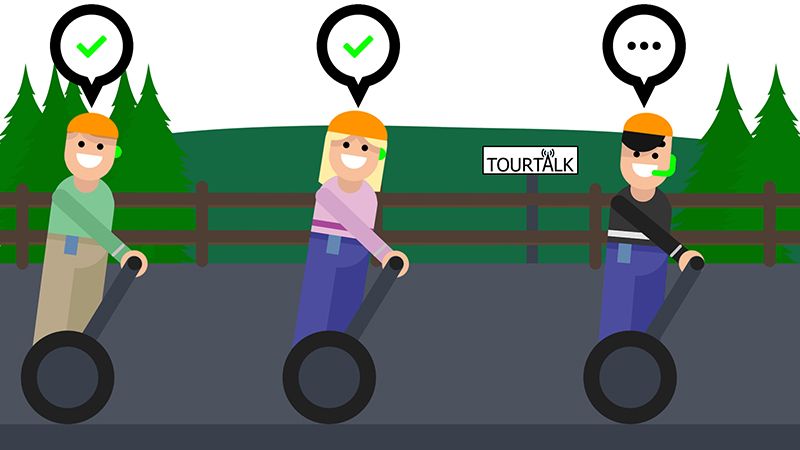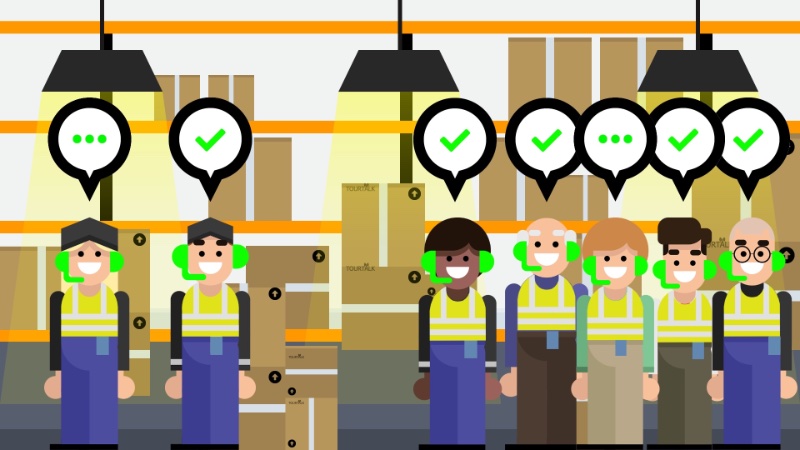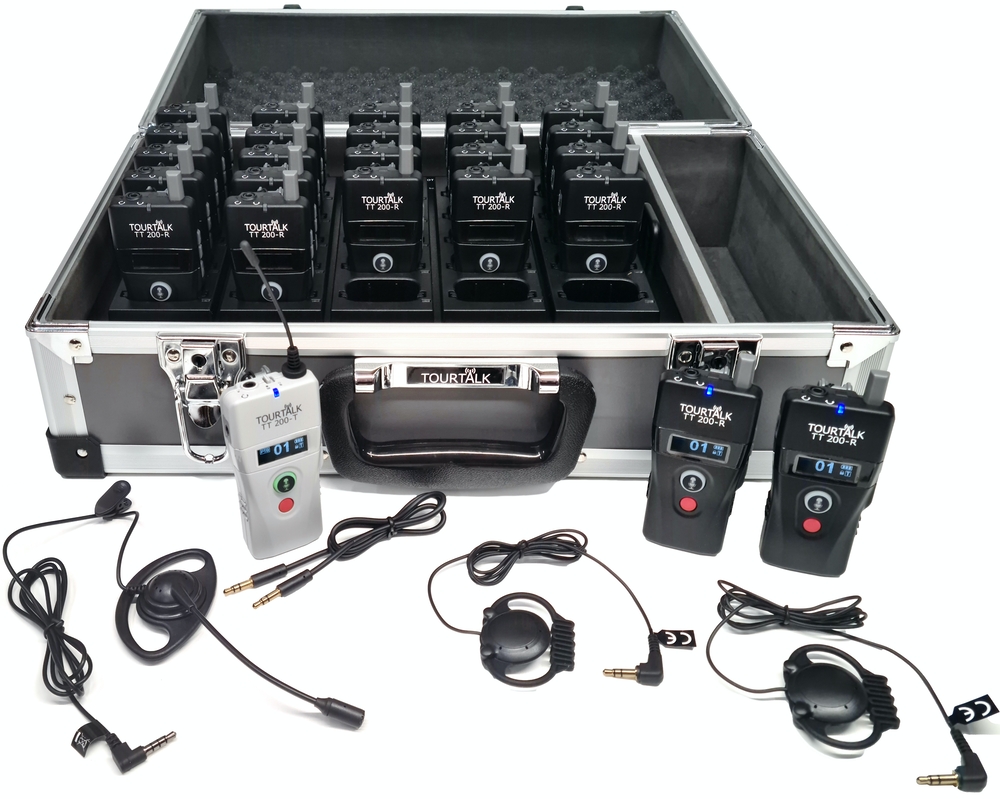Tourtalk Tour Guide Systems
Tourtalk is a portable wireless radio communication system used to transmit live audio between people. The presenter speaks into a microphone transmitter and the audience use lightweight receivers to hear the message.
Examples of use
CITY CENTRE
When a tour guide takes visitors for a tour in a busy city centre, they have to compete with background noise and constant distractions.
The tour guide simply speaks at a comfortable level into a wireless microphone with transmitter, and the tourists each wear an earphone connected to a receiver. Each tourist can then adjust their personal volume. Not only does the Tourtalk system help keep the group focused on what is being said, it reduces the strain on the tour guide’s voice. The guide can also connect a smartphone to the transmitter to play a pre-recorded commentary about the sites, enhancing the visitors experience. A second transmitter can be used to enable two tour guides to communicate to the visitors simultaneously. The visitors can comment to the tour guide(s) and tour group (when permitted) by talking into their receiver’s integrated microphone. This can be particularly useful for any interviews, question and answer sessions, or when an interpreter is present with foreign visitors.

MUSEUM
A tour guide takes their customers around a museum but doesn’t want to disturb other people in the vicinity.
The guide can whisper into a headband microphone connected to the wireless transmitter. The visitors are each issued with a receiver and earphone. They can then adjust their own volume to hear the guide’s voice. As each transmitter and receiver is supplied with a belt-clip and lanyard the system can be used hands-free. The system also prevents other people from overhearing what the guide is saying.

SEGWAY TOUR
A Segway guide needs to speak to tourists when travelling to inform them of any points-of-interest.
The tour guide wears a headband microphone connected to a wireless transmitter so they can remain hands-free when speaking. Each tourist is issued with a receiver and single earphone to hear the guide. As the single earphone only covers one ear, the other ear is still exposed to enable the tourists to hear any potential hazards such as vehicles.

NOISY FACTORY
An engineering company wants to take guests around their noisy factory.
It would be impossible for the company representative to communicate with the guests, as hearing protection is required. The company representative speaks into a noise reduction headset connected to a transmitter. The guests each have a receiver with noise reduction headset to hear the message. The guests can ask questions to the company representative by speaking into their headset. The company representative can remove the talking rights of the guests at any time, to control the proceedings in an orderly way.

FIELD TRIP
A lecturer needs to communicate to a university class on a field trip.
The students are spread out across a large area. The lecturer cannot compete with the wind, ambient noise and distance to speak to the group. As the Tourtalk transmitter has a long range, the guide can talk into a microphone without having to shout. The students can clearly hear every word by using a receiver with headphones. The lecturer can check how many receivers are connected to their transmitter in real-time via the transmitter’s OLED screen. The lecturer can also call the students to gather, creating an alarm in the headphones and causing the receivers to vibrate, ensuring all students return to the lecturer when required to.
As all Tourtalk systems have multiple channels, separate tours can take place within the same venue at the same time.
An inductive neck loop is available to assist a hearing aid wearer attending a tour.
A wide range of accessories are available for the system to suit each application. Whether the tour is taking place in a cathedral or a noisy workshop, a Tourtalk system can be used to provide a professional experience for your guests.

A range of tour guide system packages are available.
To see the equipment in more detail please click here.
